Call our helpline
0300 180 0028Short guide:
- Tap the Settings icon to open the Settings app. Scroll down and tap Accessibility.
- Tap Read & Speak.
- To change the voice used for the built-in screen reader apps, tap Voices.
- Choose the language you want to change the voice for.
- Tap Voice.
- Tap a voice to use it. Note: The voice may need to be downloaded before you can use it. Tap the Play button to hear a sample.
- You can make the voice easier to understand by adjusting the settings for Speaking Rate, Pitch, Volume, Timbre, and the length of pauses between sentences.
- If the screen reader mispronounces certain words or names, you can add your own pronunciations. To do this, go back to the main Read & Speak page and tap Pronunciations.
Before and after
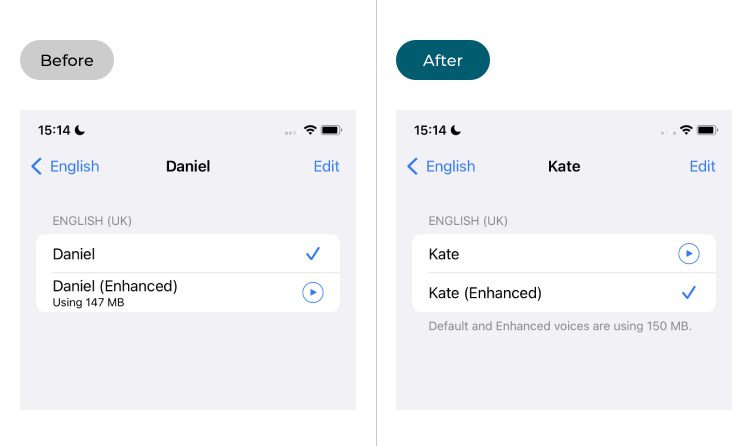
This section gives you step by step instructions on how to change the screen reader options in iOS 26 and customise the voice, with pictures of the screens to help.
Open the Accessibility settings
1. Tap the Settings icon ![]() on your Home screen to open the Settings app. Scroll down and tap Accessibility.
on your Home screen to open the Settings app. Scroll down and tap Accessibility.
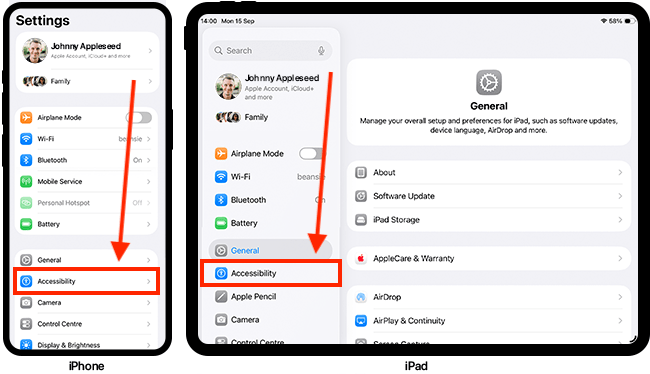
Find the Spoken Content settings
2. On the Accessibility screen, tap Spoken Content.
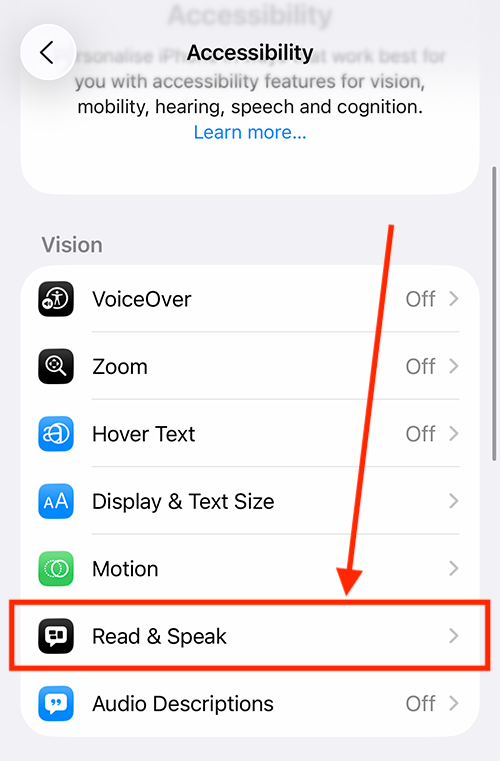
Change the voice used by screen readers
3. To change the voice used by the built-in screen reader apps, tap Voices. Then, select the language for which you want to change the voice.
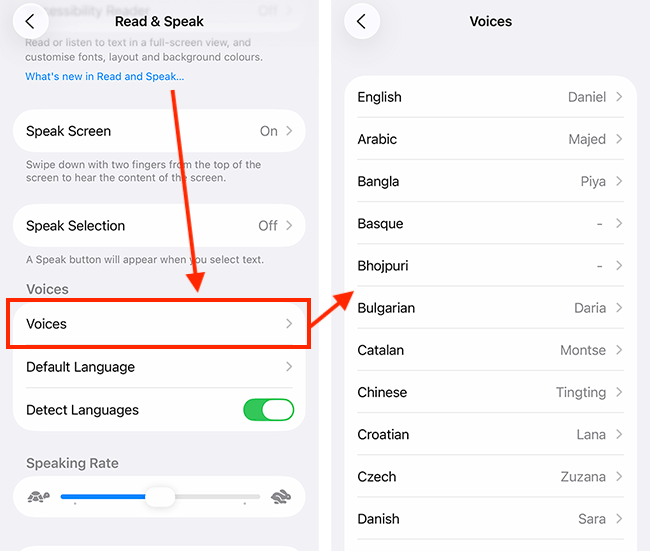
Select a new voice
4. Next, tap Voice, then choose from the available voice options. In addition to the standard voice, some options include enhanced and premium versions. These offer improved pronunciation and higher sound quality but may require more storage space. You might need to download a voice before it can be used.
Tap the Play button next to a voice to hear a sample.
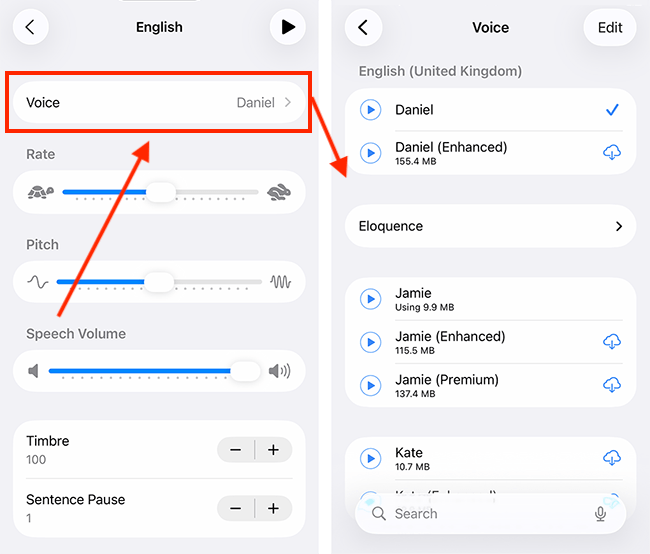
Customise how the selected voice sounds
5. You can customise the voice to make it easier to understand. The table below shows the adjustments you can make.
| Adjustment | Description |
| Rate | Adjust the slider for Rate to change how fast the voice speaks. Note: You can also change the speaking rate on the main Read & Speak page. |
| Pitch | Adjust the slide for Pitch to change how high or low the voice sounds. |
| Speech Volume | Adjust the slider for Speech Volume to change how loud the voice is in comparison with your media volume settings. |
| Timbre | Use the + (plus) and – (minus) buttons for Timbre to change the character of the voice. |
| Sentence Pause | Use the + (plus) and – (minus) buttons for Sentence Pause to set how long speech should wait at the end of a sentence before continuing. |
| Equaliser | The Equaliser allows you to fine-tune the voice by adjusting individual frequency ranges – such as the Lows, Mids, and Highs. Tap Equaliser, then use the sliders to set each frequency to your preference. |
| Reset Voice Settings | Tap Reset Voice Settings to restore all voice settings to their defaults. Note: This doesn't change the actual voice itself. |
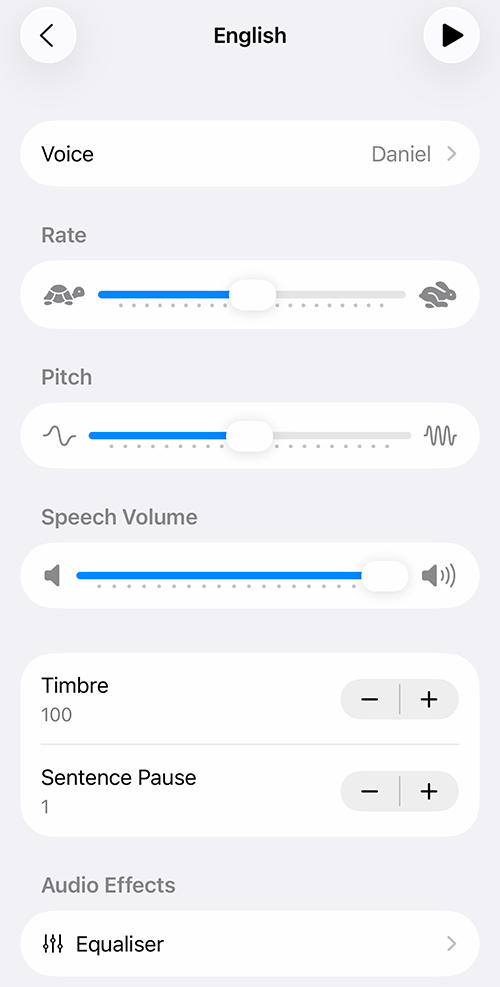
Fix mispronunciations
6. If you find the screen reader mispronounces words or names, you can add your own pronunciations to use instead. To do this, go back to the main Read & Speak page, tap Pronunciations.
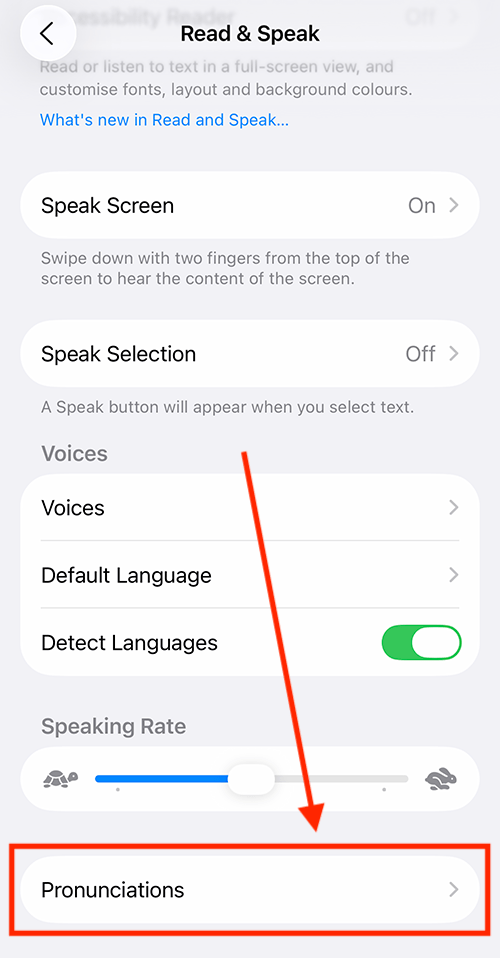
Add a new pronunciation
7. To add a new pronunciation, select the + (plus) button in the top-right corner.
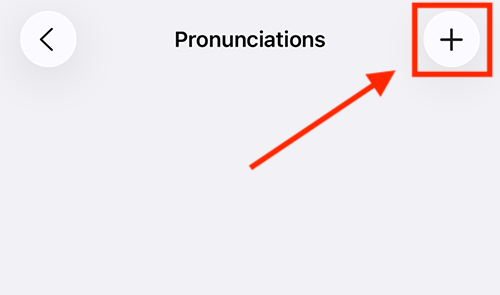
8. Type the phrase you want to customise, then enter a phonetic version of how it should sound in the Substitution box. Alternatively, you can tap the Microphone icon and speak the pronunciation.
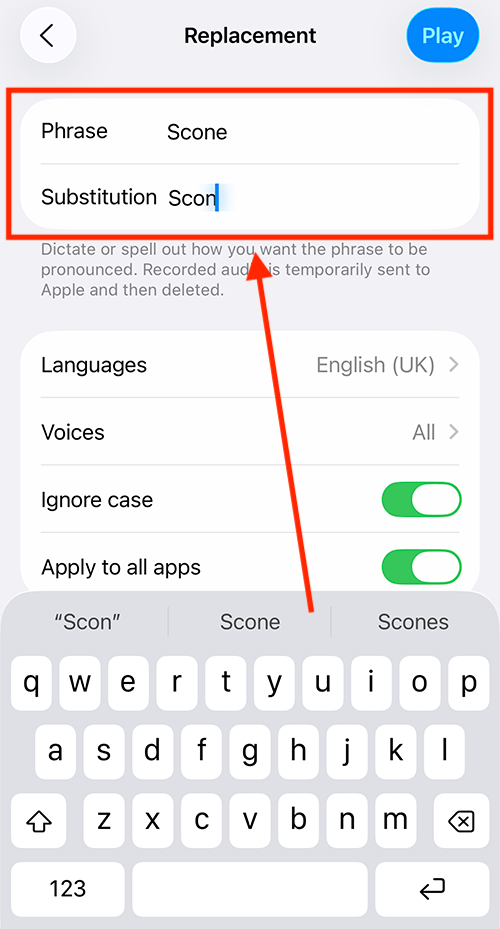
Preview the new pronunciation
8. To hear your new pronunciation, tap the Play button in the top-right corner.
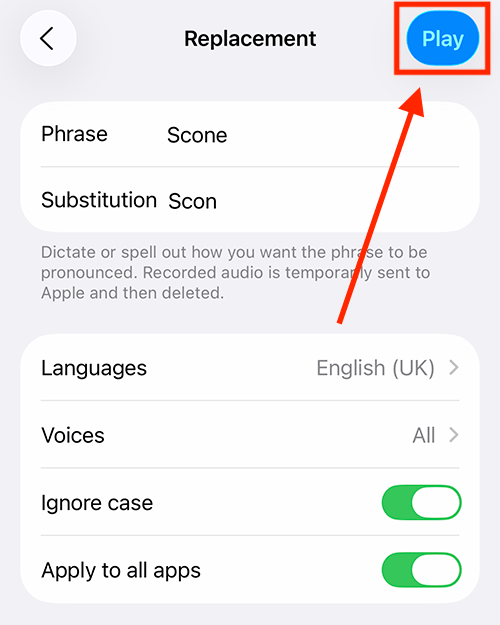
Select how and where to use the new pronunciation
9. When you're happy with the new pronunciation, you can choose which languages and voices will use it. Tap Languages or Voices, then select all the ones you want to apply the new pronunciation to.
10. By default, this pronunciation will be applied to both the uppercase and lowercase versions of the phrase. However, if you're using it to pronounce a name, you may prefer the pronunciation to apply only when the word matches the exact case you entered above. If that's the case, simply turn off the Ignore Case toggle switch.
11. By default, this pronunciation will be used in all apps. To limit it to specific apps, turn off the Apply to All Apps toggle switch, then select the apps you want to use this pronunciation with.
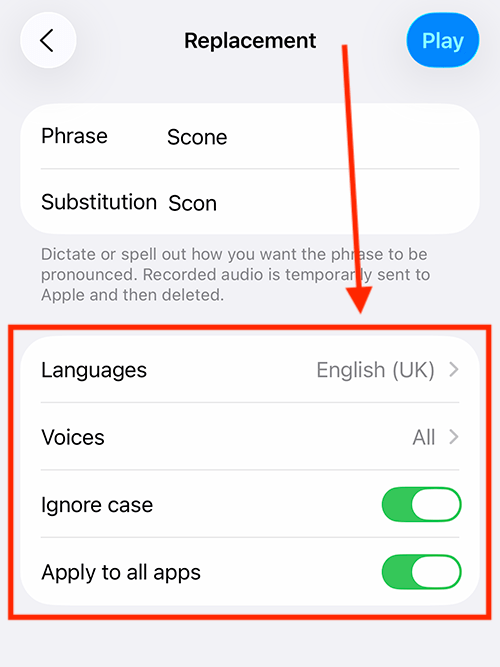
Return to the Home screen
10. When you are happy with your settings, return to the Home screen by swiping up from the bottom of the screen or tapping the Home button if your device has one.